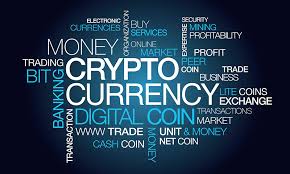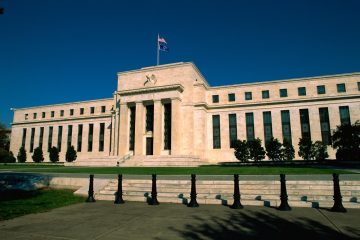This cryptocurrency website is selling for more money than Facebook’s

What’s money worth if interest rates are negative?
Interest rates, after all, are the “price” of money.
When we borrow money from a bank and pay interest on the loan, it means that the money we’re borrowing has value. That –capital- has value.
Negative interest rates, on the other hand, suggest that capital is totally worthless.
This isn’t a philosophical exercise. These are the times we’re living in.
Despite a few tiny increases, interest rates worldwide are still near the lowest levels they’ve been in 5,000 years of human history.
Bankrupt governments across Europe who are already in debt up to their eyeballs have issued trillions of euros worth of new debt with negative yields.
And there have even been famous cases (also in Europe) in which bank depositors have had to PAY interest, while borrowers were BEING PAID to take out a mortgage.
Capitalism is defined by capital.
How does capitalism function when the cost of capital goes negative?
How does price discovery take place in a market where people (and governments) are literally being paid to borrow money?
I’m asking these questions because I honestly don’t know the answers.
Something is fundamentally broken in the market today.
Stripping capital of its value causes people to do stupid things.
How else could anyone explain that Argentina, a country in perpetual crisis that has defaulted on its debt eight times in the past century, sold billions of dollars worth of 100-year bonds last month to eager investors?
Or that Netflix, a company which consistently burns through billions of dollars of capital, was able to borrow over $ 1.5 billion at an interest rate of just 3.625%?
Again, this company lost $ 1.7 billion last year.
Plus they say they’ll lose another $ 2.5 billion in 2017, and that they don’t see this situation improving anytime soon.
In fact, Netflix’s most recent quarterly report states very plainly, “we expect to be FCF [free cash flow] negative for many years.”
Tesla, another serial value destroyer, is also tapping the debt markets.
That company is raising $ 1.5 billion to fund production of its low-priced Model 3.
That will bring the total amount of capital Tesla has raised since 2014 to nearly $ 8 billion.
Of course, Tesla needs to keep raising money because they burn through it so quickly.
Tesla loses $ 13,000 on every single car that it makes.
And the company has lost $ 1.6 billion in the past two quarters alone, not including the absurdly expensive Model 3 launch.
Then there’s Uber, a company ‘worth’ nearly $ 70 billion (and has raised around $ 14 billion in cash).
Yet the company loses nearly $ 3 billion every year.
And let’s not forget the mad dash for Bitcoin, which just hit yet another record high… or the even more high-flying market for ‘Initial Coin Offerings’, or ICOs.
ICOs are so white-hot that, earlier this summer, one company raised $ 153 million through the Ethereum blockchain in just THREE hours.
And of course there’s Ethereum itself, which is up 2,000% so far this year.
Perhaps most telling is that the domain Ethereum.com is available for sale for TEN MILLION DOLLARS.
Ironically the domain investing.com sold for just $ 2.45 million a few years ago.
Even Facebook’s fb.com sold for less— $ 8.5 million.
Now, I’m very much in favor of the crytpofinance movement.
But it’s clear that countless people are throwing money at an asset class that they don’t understand or know anything about.
I wonder how many retail investors who bought Bitcoin at its peak have ever read the original white paper… or have a clue how it works.
Or how many ethereum speculators understand a single line of code from the blockchain’s all-important ‘smart contract’ programming language?
People today are reckless with their money. They’re blindly throwing cash at anything that could produce a return.
This is the type of behavior that takes place when capital loses its value.
History is full of similar examples of capital losing value, including the famous episode of hyperinflation in Weimar Germany.
Hyperinflation hit Germany after the country printed paper money to finance its debt payments after World War I.
The government was printing so much money that they had to commission 130 different printing companies to run around the clock.
In 1914, at the beginning of the Great War, the exchange rate of the German mark to the US dollar was 4.2 to 1.
In 1923, the rate jumped to 4.2 trillion to one. The German mark was essentially worthless.
The currency lost value so rapidly, waiters would have to jump on tables to announce price changes every half hour.
Workers would bring wheelbarrows to work to collect their wages… then immediately leave to spend the money before it lost its value.
The barter system set in, with craftsmen offering their services for food.
Children would make arts and crafts with money, adults would burn the worthless paper to light their stove.
I doubt many people are setting money on fire to heat their homes today.
But they might as well be.
With so many investors throwing their capital into phenomenally pitiful investments that consistently lose money with no end in sight, or bonds which guarantee negative rates of return, the end result is the same–
That money is being set on fire.



